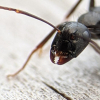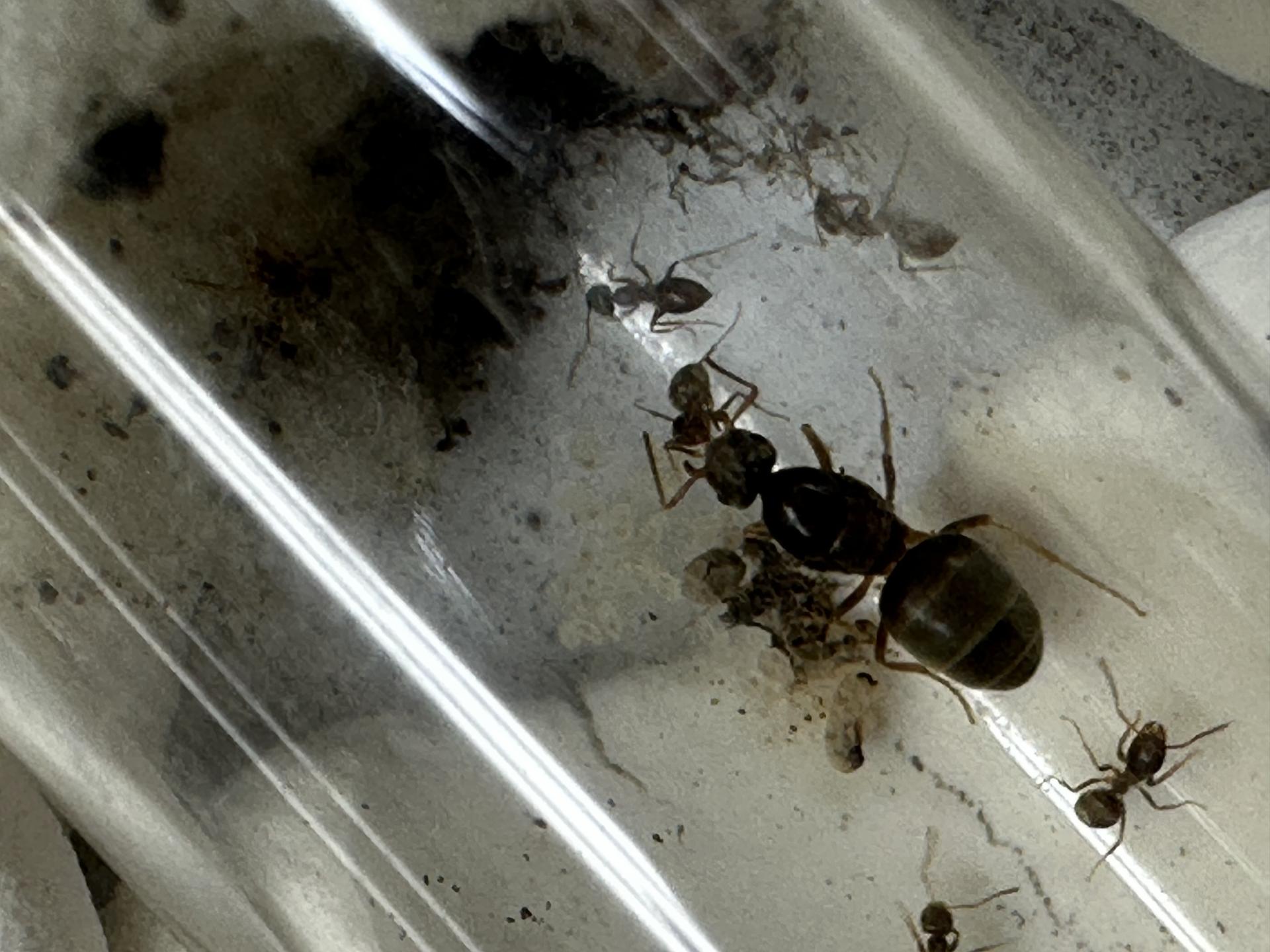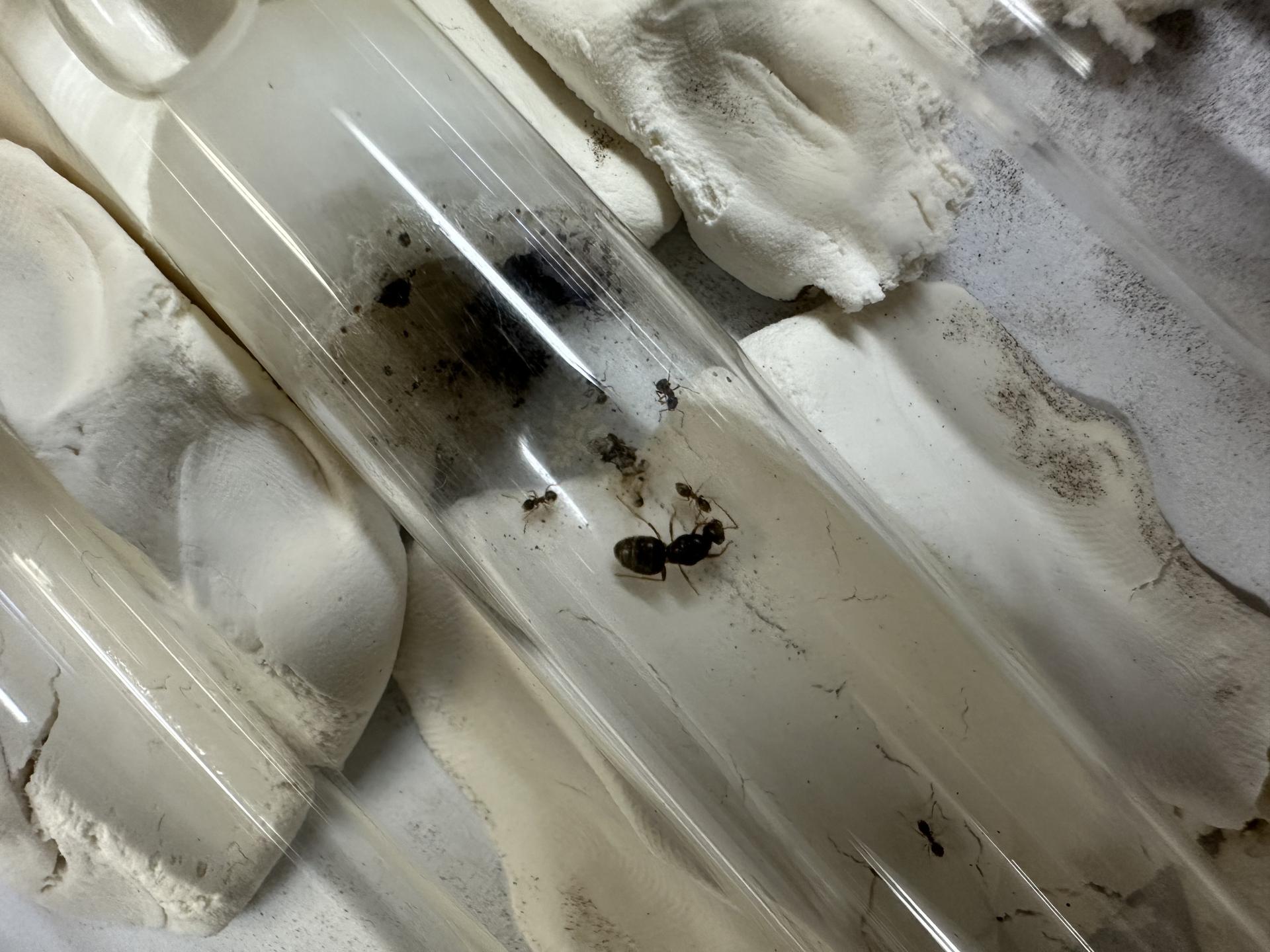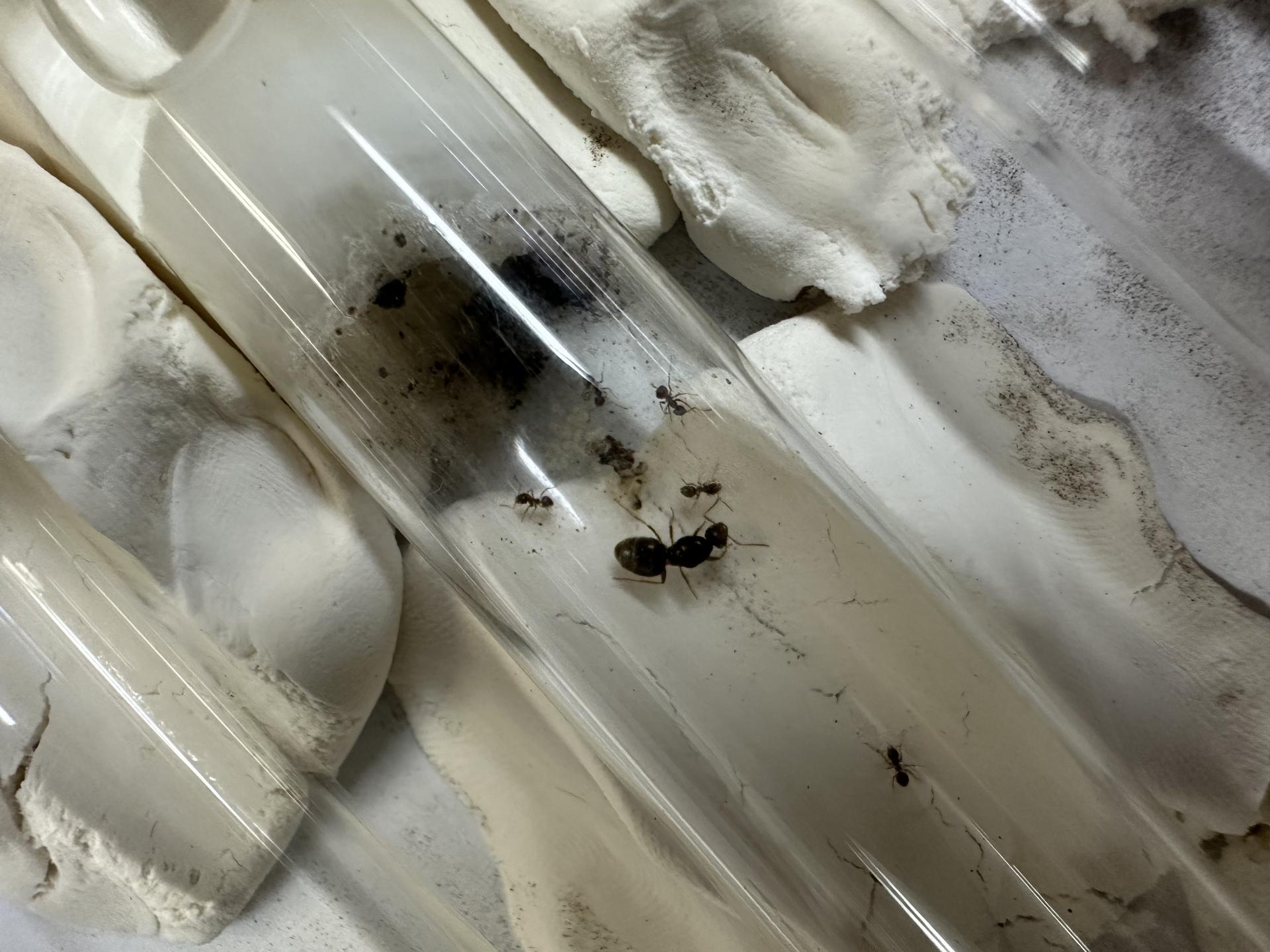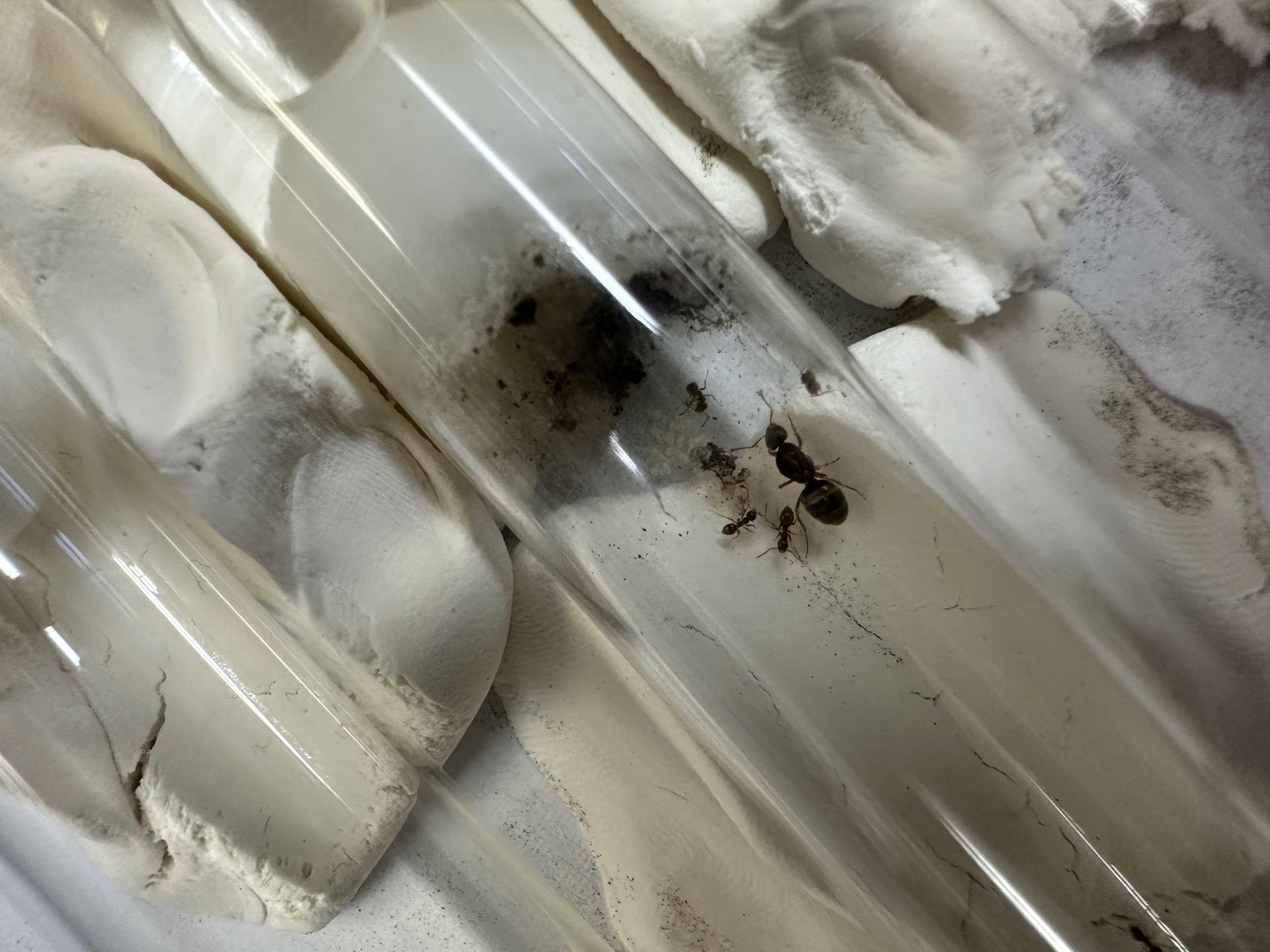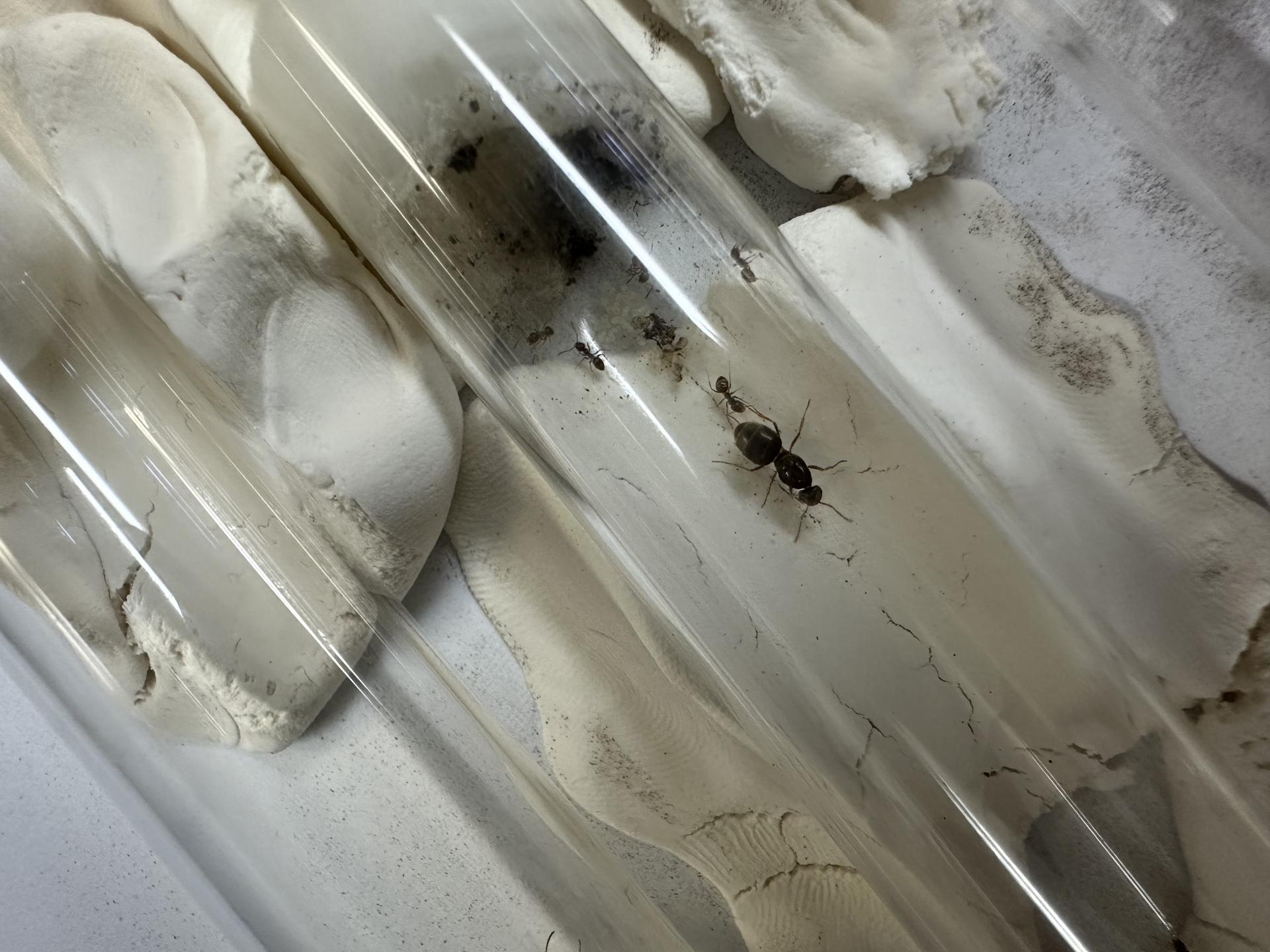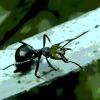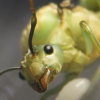First post, apologies if there are missing elements. I am a STEM teacher attempting to raise ants with my class for a little hands-on learning. Thank you in advance for your expertise (and patience with my amateurishness)!
1. Location of collection: Edgewater, in Chicago, IL.
2. Date of collection: 9/9/2025.
3. Habitat of collection: A grassy patch of otherwise dry, almost dusty, compacted soil near the beach (unable to pull up the technical terms).
4. Length: Approx. 8mm. Could not remove from enclosure for fear of disturbing.
5. Coloration, hue, pattern and texture: Chocolate brown, with velvety, almost iridescent gaster with golden "ridges" between plates. No hair that I can identify.
6. Distinguishing characteristics: No petiole nodes or spines/bumps that I can identify, waist seems to be very short, almost non-existent. Unsure of antennal segments.
7. Anything else distinctive: Nothing else distinctive, cooperative with her workers, seems to have a more active, less sedentary role.
8. Nest description: Small hole flush with the ground, no mounds, dusty grey, compacted soil near the beach, slightly gravelly.
9. Nuptial flight time and date: Did not witness.


